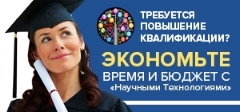Golikova Tatiana Olegovna (Candidate of Philology, Assistant Professor at the English Language Chair of the Department of Language Training, Institute for Social Sciences of the Russian Presidential Academy of National Economy and Public Administration, Moscow)
| |
The research is relevant and topical because it is done within the framework of communicative linguistics. Communicative linguistics which is developing nowadays enables the researcher to reveal the connection of word meaning with the personality of the speaker or the writer and encourage proper expression. Particularly interesting is the analysis of the vocabulary of a literary text, because the text is an environment where word meaning reveals itself fully.
The article deals with systemic, functional and communicative characteristics of vocabulary in short stories. The article outlines the stages and the steps of a study of the vocabulary in this type of text. They are the choice of texts, the selection of the corpus of words, the systematization of the units selected, the comparison of vocabulary in different sets of texts, the tracing of communicatively relevant shifts in the meaning of words, a comparison of these shifts. The information expressed by the vocabulary is studied in short stories of common and different content that belong to different American writers and are written in their unique style. The methods of analysis are illustrated by examples. Finally, the stages of the analysis are summed up and a conclusion is made that the methods of analysis suggested give a chance to penetrate deeper into the meaning of the word in a literary text.
Keywords:a seme, semic variation, a communicatively relevant set of semes, a semantic indicator, a marker
|
|
| |
|
Read the full article …
|
Citation link:
Golikova T. O. METHODOLOGY FOR RESEARCHING THE INFORMATION-CONTENT STRUCTURE OF VOCABULARY IN A WORK OF ART (BASED ON THE STORIES OF I. SHAW AND E. HEMINGWAY) // Современная наука: актуальные проблемы теории и практики. Серия: ГУМАНИТАРНЫЕ НАУКИ. -2023. -№08. -С. 138-144 DOI 10.37882/2223-2982.2023.8.12 |
|
|






